If you think frogs are just slimy creatures that hop around and catch flies, think again. These amphibians have a surprisingly diverse diet that will leave you hopping with excitement!
What do frogs eat, and how? Frogs are carnivores, and they primarily feed on insects, spiders, worms, and small invertebrates. Frogs have unique hunting techniques, such as using their long, sticky tongues to catch fast-moving insects.
In this article, we will delve into the dietary habits of frogs. Exploring their diverse menu in both the wild and in captivity.
Frogs Dietary Needs

When it comes to the percentage of nutrients needed by frogs daily, it’s essential to consider their specific dietary requirements. Here we attached a table with the percentage of the nutrients that frogs need daily:
| Nutrients | Percentage (By Weight) |
|---|---|
| Protein | 30-60% |
| Fats(lipids) | 10-30% |
| Carbohydrate ( fiver) | 10-20% |
Source link – https://www.amphibianark.org/research/Amphibian-diet-and-nutrition.pdf
What Do Frogs Eat?
Frogs are not picky eaters, and their diet largely depends on their size, habitat, and availability of prey. Here’s a breakdown of what frogs commonly feast on:

What Food a Baby Frog Eats
Small frogs have a diet that primarily consists of various small invertebrates and insects. Here are some common types of food that small frogs typically eat:
- Insects: Small frogs are usually insectivorous and consume a variety of insects, such as ants, flies, mosquitoes, crickets, and beetles.
- Arachnids: They may also eat small arachnids like spiders, mites, and ticks.
- Worms: Small frogs often feed on worms, including earthworms and other soil-dwelling invertebrates.
- Crustaceans: In aquatic environments, some small frogs may consume tiny crustaceans.
- Small Aquatic Invertebrates: If they live near or in water, small frogs might eat small aquatic invertebrates.
- Amphibian Larvae: Small frogs may prey on the tadpoles and larvae of other amphibians, including those of their own species.
- Small Snails: Some species of small frogs have specialized diets and feed on tiny snails or mollusks.
- Plants: While not a primary food source, some small frogs, like the Cuban tree frog, consume plant matter, algae, or small plant-dwelling invertebrates in their tadpole stage.
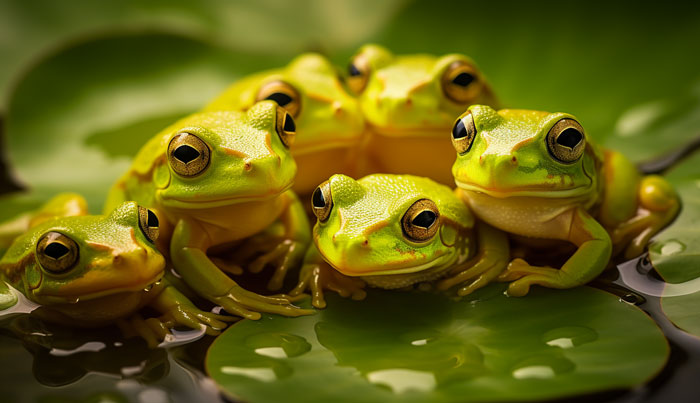
What Food An Adult Frog Eats
Adult frogs, like their smaller counterparts, have varied diets depending on their species and habitat. Here are common types of food that adult frogs typically eat:
- Insects: Adult frogs are primarily insectivores, consuming a wide range of insects such as beetles, flies, ants, crickets, moths, and more.
- Arachnids: Adult frogs may also eat spiders and other arachnids when they come across them.
- Worms: Adult frogs continue to eat worms, including earthworms and other small, burrowing invertebrates.
- Crustaceans: In aquatic environments, some adult frogs consume small crustaceans like crayfish and shrimp.
- Small Fish: Larger adult frogs, such as bullfrogs, may eat small fish and tadpoles, particularly if they live near water bodies.
- Amphibians: Some adult frogs, especially those of larger species, are known to consume smaller frogs, including their own species, in a behavior known as cannibalism.
- Reptiles and Small Birds: In rare cases, larger adult frogs may consume small reptiles or birds if they encounter them.
- Snails and Mollusks: Some adult frogs have specialized diets and feed on snails and mollusks, which they can crush with their specialized teeth.
- Small Mammals: Certain larger adult frogs, like the Goliath frog, have been known to eat small mammals and birds.
- Plants: While not a primary food source, some adult frogs, like Budgett’s frog, consume plant matter, algae, or small plant-dwelling invertebrates occasionally.

How Do Frogs Catch and Consume Their Prey?
Frogs are fascinating predators with a unique approach to catching and consuming their prey. They primarily use their specialized anatomy and behaviors to capture a variety of insects and other small creatures.
Here’s how they do it:
Long, Sticky Tongue
Frogs have long, sticky tongues that they use to catch their prey. When they spot a potential meal, they rapidly extend their tongue to strike the prey.

Quick Reflexes
Frogs are known for their quick reflexes. They can lunge at their prey with impressive speed, catching insects and other small animals by surprise.
Suction Feeding
Some frogs employ suction feeding. They draw prey into their mouths by creating negative pressure in their oral cavity.
Wait and Ambush
Certain frog species are sit-and-wait predators. They patiently remain still, often blending in with their surroundings, and wait for prey to come within striking distance. When an unsuspecting insect or small animal comes close enough, the frog strikes.
Nocturnal Hunting
Many frogs are nocturnal, meaning they are most active at night. Their specialized night vision allows them to hunt in low-light conditions effectively.
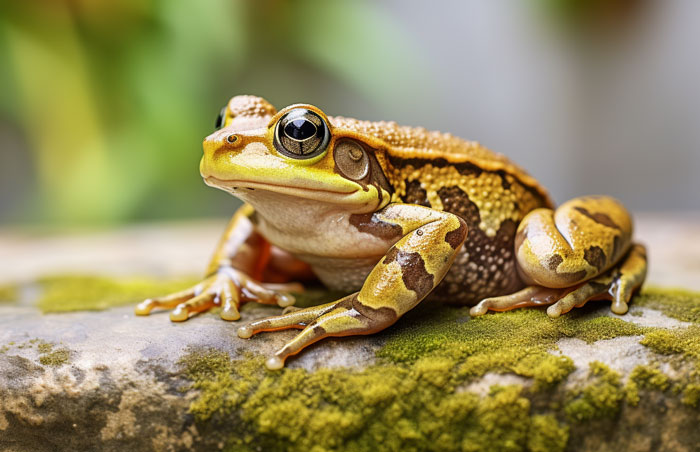
Diet Diversity
Frogs have diverse diets. While most are insectivorous, some species also consume small vertebrates, other frogs, or even vegetation.
Powerful Jaws
Some larger frog species have powerful jaws that allow them to capture and consume larger prey. They may even eat small mammals, birds, or reptiles.
Digestive Adaptations
Frogs have a digestive system well-suited for processing their prey. They lack teeth and swallow their food whole. In their stomach, strong digestive acids break down the prey, allowing the frog to extract nutrients.
Unique Dietary Habits of Certain Frog Species
Certain frog species have unique dietary habits that distinguish them from typical insectivorous or carnivorous frogs. Here are a few examples:
Horned Frogs:
- These frogs are known for their impressive gape and powerful jaws, allowing them to consume relatively large prey.
- Their diet can include insects, small mammals, other frogs, and even small birds.
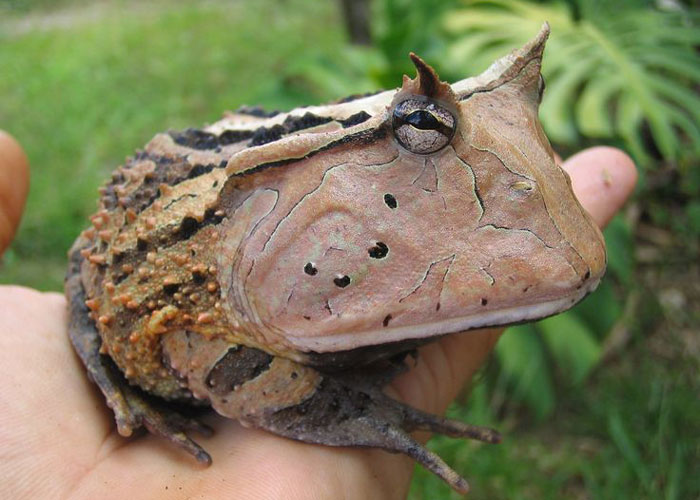
Tree Frogs:
- Arboreal frogs, such as the red-eyed tree frog, primarily feed on insects and other small arthropods. They are well-adapted to catching prey in the trees.
- Tree frogs are known for their agile climbing abilities and long, sticky toes.

African Clawed Frogs:
- These aquatic frogs have specialized feeding habits. They lack a tongue and teeth and use their front feet to shovel food into their mouths.
- Their diet consists of small aquatic invertebrates and even small fish, making them opportunistic scavengers.

Budgett’s Frog:
- This unique frog is known for its distinctive appearance, which includes a flattened body and a large mouth.
- Their diet primarily consists of aquatic insects and small aquatic invertebrates.
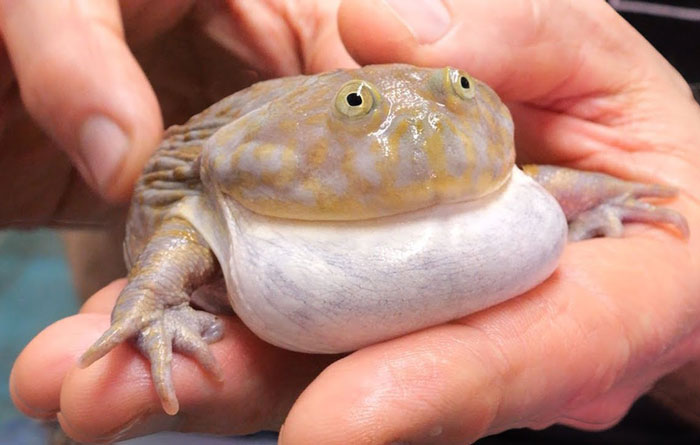
Marsupial Frogs:
- Marsupial frogs have a unique reproductive strategy. They are known for their brood pouch, where they carry developing tadpoles.
- Some species of marsupial frogs feed on their own unfertilized eggs to provide nourishment to their developing tadpoles. This is an exceptional adaptation to ensure the survival of their offspring.

Fringe-Limbed Tree Frogs:
- These frogs have developed a unique adaptation for feeding. They possess long, webbed fingers and toes, which they use to create a “net” to catch flying insects.
- They are adapted to arboreal habitats and rely on their specialized limbs to catch prey in the treetops.
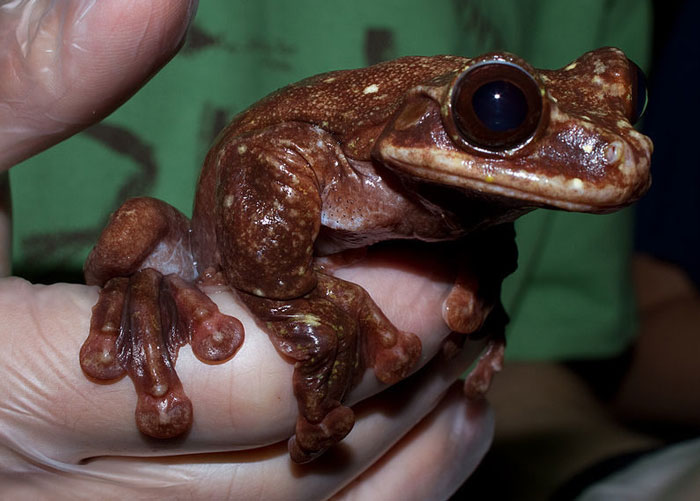
What Food Frogs Can’t Eat?
Frogs have specific dietary preferences and restrictions. While they are known for their diverse diets, there are certain foods that frogs should not consume. Here are some types of foods that frogs can’t eat:
- Processed Foods
- Sugary Foods
- Salts
- Dairy Products
- Spicy Foods
- Large Prey
- Toxic Plants and Insects
- Foods with Pesticides or Herbicides

FAQs
Here we attached some common questions that can help you
Changes in climate and human activities can impact the availability of frog food sources, affecting their overall diet and well-being.
No, the diet of frogs can vary depending on their species and habitat.
Feeding frequency depends on the frog’s age and species. Generally, adult frogs are fed every 2-3 days, while juveniles may require daily feedings.
Conclusion
Frogs have a diverse diet that includes a variety of insects, small invertebrates, and even other frogs. They use their long tongues and sticky saliva to catch their prey with lightning-fast accuracy. Some species of frogs also have specialized adaptations that allow them to eat larger prey, such as rodents or birds.
Understanding the dietary needs of frogs is crucial for frogs’ conservation and protection. By preserving the habitats where they find their food, we can ensure the survival of these unique amphibians for future generations to enjoy.

Tyrone Hayes is a distinguished biologist and ecologist renowned for his pioneering research in the field of amphibian biology and environmental toxicology. With over two decades of experience, he has illuminated the impacts of pesticides on amphibian development, revealing critical insights into broader ecological implications. Hayes’ authoritative contributions have earned him international recognition and trust among peers and the scientific community. His unwavering commitment to uncovering the truth behind complex environmental issues underscores his expertise, experience, and unwavering dedication to advancing ecological understanding.
